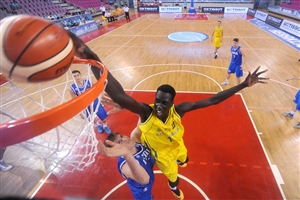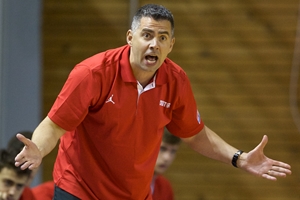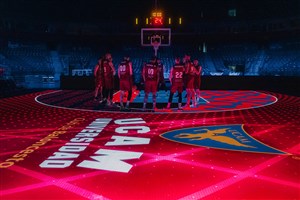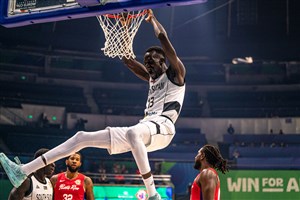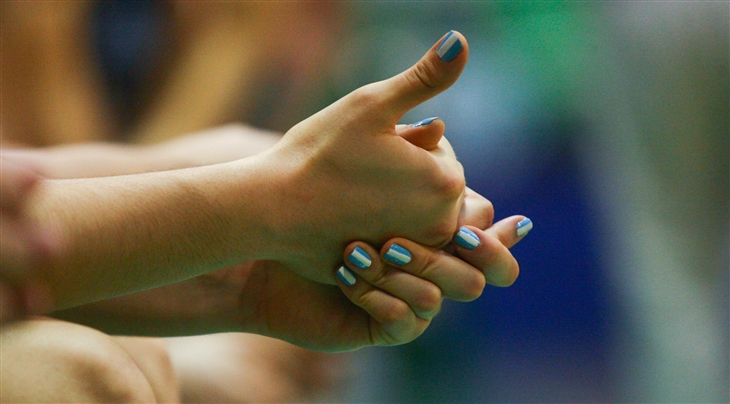
Being a woman basketball player in South America
SAN JUAN (William Rosario's Somewhere in the Americas) - The Pan American Games got underway this week in Toronto and the basketball events will tip off in a couple of days, starting with the women's competition.
Life, always serving up teaching moments, gave me the opportunity to meet up with a now old friend women's basketball player who came to Puerto Rico as part of the friendlies which her national team was taking part in prior to the Toronto games. She is from South America, plays in a South American country and will remain nameless in this column because the conversation we had this week had honesty and openness at its core and I would never want to hurt that dynamic for our future encounters.
I've been guilty of condescending to women's basketball before. I am a man, raised in a Caribbean country that prides itself on having basketball as its number one sport. It is true; basketball is the undisputed number 1…men basketball that is.
Women's basketball is largely ignored and celebrated once in a blue moon, when there is a surprising victory in an international competition, like the past edition of the Pan American Games where the Puerto Ricans won gold and made their first-ever appearance on the cover of a national newspaper. But it is not closely followed. When I was growing up, I never heard of the women's national basketball team.
And basketball is the number one sport!
It has always made me think about what it must be like to be a women's basketball player in South America, outside of Brazil.
Brazil had a golden era for women's basketball. It was the 1980s, early 1990s, and they had a duo that is still glorious to this day in Hortencia Marcari and Maria Paula Gonçalves da Silva (also known as "Magic Paula", in reference to Magic Johnson). They were a better show than the men. Just beautiful basketball players and icons of their country in their playing days. Marcari a great scorer, Paula a show-woman.
But they were the exception. Basketball, even for most women's national team players in South American, is something they "also do".
"I started playing basketball as a coincidence, because my club had it as a sport. But it is not in schools, so it's very hard to even know about it. In a normal club you might have hockey, tennis and basketball [most definitely in that order]. And I just found a good teacher who used the fun of the game to educate us. I gradually fell in love with the human side of it, with the fun I had with my teammates," said my friend.
She loves the game. You can see it in the way she talks about it, in how she goes into detail about wanting to be involved with it for a long time.
On the court, she's one of those passionate players that screams after every made basket irrespective of it being in a friendly game or the final of the FIBA Americas Championship.
But there's not enough money in it to become a sole thing, a full-time endeavor, I repeat, even for a national team player.
"The worst thing is that you end up never knowing what could have been your ceiling if you had been living [as] a full-time professional, let's say from the age of 18 on. I'll never know how good my shot should have been if I had the time to practice a thousand shots or 500 free-throws like Larry Bird used to do. We study and work," she added but immediately proceeded to spin it to talk about the positive aspect of it.
"But there's also a good thing. There are no delusions about our careers. I know I'm not going to be able to live off of basketball. There's an end to it and studying/working is the smart thing to do. There are no lottery tickets for women basketball players in my country, but that forces us to look to be mature and look for growth in other areas. It grounds us."
It is a shame though. She is being genuine but I know it must be tough to be so in love with basketball without being able to fully dedicate yourself to it. She is literally an amateur ("lover of" basketball). But how can you grow like that? I mean, as a country how can you grow the sport in an atmosphere of amateurism?
"I actually think federations have an interest in it. I prefer to be optimistic about it. In Ecuador, Chile, Brazil, and now Argentina there are professional leagues or at least the impulse to have professional leagues. But they are too short."
She's right, those countries have national leagues and they are too short. Two to three months at the most. So if you add up the national league calendar with the national team competition, you are talking about four months of basketball competition throughout the year. I once again ask, how can you grow?
"I don't know. I’m aware that it is costly to properly develop a national competition for women, but it should happen if they do care. We should have a league with the same duration as Europe if you then want to ask us to compete internationally at that level."
"We haven't moved forward. In my country, women's basketball is where men's basketball used to be in the early 1980s. There hasn't been an evolution. We need to dramatically improve, adapt to the current context. I understand that in most South American countries women's basketball hasn't produced great results, but it is like a vicious circle. There's no money because there are not great results, and there will never be great results precisely because there is no money."
In my mind, I thought about her situation and then my situation. I identified with her struggle..
I've hinted in this column before at the fact that I have a film production company in Puerto Rico. I love film. Writing, directing actors, putting a movie together is my passion. Expressing myself in that art form is what keeps me up at night. I have made two independent films that were shown in a couple of places, won some minor accolades and are now in distribution limbo. And have not done another one in five-plus years.
I live in a country that has no film industry other than serving as background (work too for some people) to big Hollywood movies that decide to use the island as a location. Making a movie, living off of making movies (personal movies), is impossible. And I have to divide my time between other endeavors (this "basketball thing" being one of them).
So I identify with my friend's internal struggle about not being able to fully surrender herself to the thing she really loves and is passionate about. I understand the "what if".
She is in her 30s and already thinking about retiring. I sensed motherhood is calling and she knows the infrastructure of women's basketball in her country won't allow for her to take a year off and come back.
Women make $300 to $400 dollars a month at the most playing basketball in her country. $450 for playing in the national team. That makes it to about $1,250 dollars a year if you are the best. (Talk about pay equality when the best male basketball player can make up to 120 thousand dollars a year.)
I lost about $2,000 dollars when I made my movies and couldn't pay the actors and crew. I've known about colleagues that have lost more.
When I asked about what happens when she leaves the game her immediate response was "you are going to make me cry."
I was ready to cry with her.
William Rosario
FIBA
FIBA's columnists write on a wide range of topics relating to basketball that are of interest to them. The opinions they express are their own and in no way reflect those of FIBA.
FIBA takes no responsibility and gives no guarantees, warranties or representations, implied or otherwise, for the content or accuracy of the content and opinion expressed in the above article.

